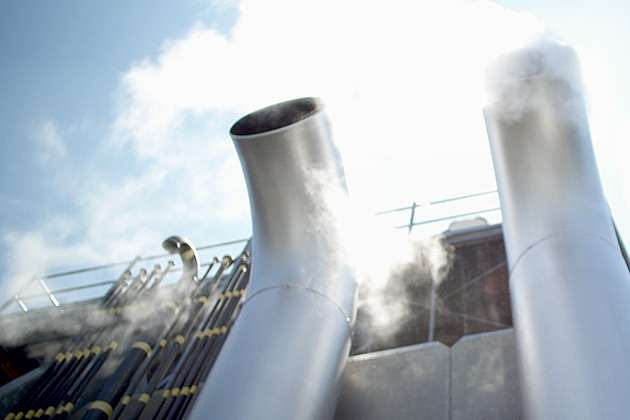A new water reclamation facility nearing completion on the Storrs campus will soon allow the University to make use of hundreds of thousands of gallons of treated waste water, helping to better manage water demand on campus. Scheduled to be operational early next year, this facility will be capable of treating up to 1 million gallons of non-potable, or not drinkable, water per day.

Reclaimed water will be used to help run the campus’ CoGeneration power plant, which provides electricity, air-conditioning, and heat across most of the Storrs campus. It is currently the single largest user of potable water on campus, requiring as much as 350,000 to 400,000 gallons of water on a hot summer day.
The water reclamation facility will make a high-quality, safe, non-potable water supply available to the plant, which can function using non-potable water. Diverting reclaimed water to the power plant will therefore help to free up the campus’ supply of potable water for other uses.
In the future, the reclaimed water may also be used for irrigation purposes – for use on athletic and recreational fields, for example.
“This project is another illustration of the strong commitment to the environment at UConn,” says Provost Mun Choi. “Using advanced technologies of reverse osmosis and ultraviolet disinfection, this facility will provide reclaimed water for cooling and irrigation needs of a growing campus.”
With the only public water supply system within a 5–mile radius, the University is responsible for providing water not only to meet the needs of the Storrs campus, but also for more than 100 users across parts of Mansfield, including Town Hall, E.O. Smith High School, and the emerging downtown Storrs Center.
Reclaiming water at the new facility “will provide a tremendous amount of versatility to the system that we wouldn’t otherwise have,” says Thomas Callahan of UConn’s Administration and Operations Office, particularly when water demand is at its highest – typically from September to October, when students return to campus for the start of the academic year.
Initial plans for the water reclamation project began in 2006, Callahan says, with construction on the $25 million facility beginning last year. The facility itself is scheduled to be completed by December.
University administrators are also exploring a number of options for additional water supply, according to Callahan, in anticipation of further development in the vicinity of the University over the next few decades.



